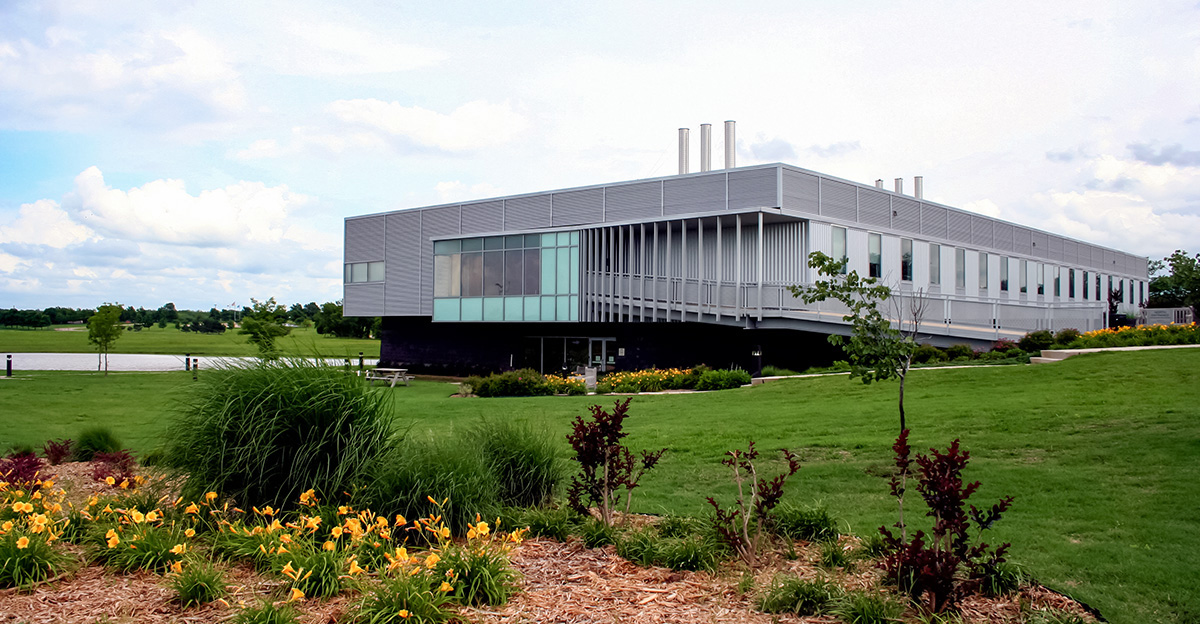
OSU Department of Physics remains at the forefront for radiation research in space travel
Tuesday, March 15, 2022
Media Contact: Kim Watkins | Communications Coordinator | 405-744-3546 | kimberly.watkins@okstate.edu
The future of space exploration might be found in a mysterious, off-campus building in Stillwater.
The Venture One building is home to the Oklahoma State University Department of Physics. Its few markings leave the imagination to wonder what goes on behind its cool exterior, however it is a hub of research and an institute of space and air innovations.
Part of that research is focused on monitoring radiation.
With the recent focus on public space travel, Dr. Eric Benton, a radiation physicist at OSU, explained that all flights are exposed to some sort of radiation, but prolonged exposure and the effects on technology and electronics are the real unknowns.
“We don’t know how radiation corrupts information,” Benton said. “We don’t know how radiation damages DNA. We need to track radiation to find the benchmark. We need to learn the balance of radiation. It gets a bad rap, but it obviously helps, too.”
To assist with that, Benton and his team created the Atmospheric Ionizing Radiation Tissue Equivalent Dosimeter (AirTED), which measures radiation. Their device has now been selected as the measurement device of choice to ride in the 2023 Blue Origin payload locker.
This will not be the first flight for OSU technology, though. AirTED was permanently installed on the WB-57, a high-altitude research plane, in December 2021.
Originally, the B-57 was made for World War I. Now, the modified plane is owned by NASA.
There are three still in flight and used for research. In its original form, the B-57 had a second seat for the bombardier but now the payload, or the AirTED, is permanently mounted in that position.
“Collectively, scientists have atmospheric measurements for space, but now we need atmospheric measurements specifically for radiation,” Benton said. “Space tourism is obviously hot right now, but radiation measurements and detectors are as important, even moreso, now.”
Scientists understand the balance of radiation and its attributes and harmful qualities, but seek the quantitative effect at different levels of exposure, he added.
Not only has OSU technology flown before AirTED, but is has also been used in space travel, as well.
“NASA’s EPSCoR Program was the first flight for the OSU team’s radiation detection. But the device was damaged in shipment,” Benton said.
In 2018, the OSU physics department again landed a spot for the detector to board a ship bound to the International Space Station.
After these opportunities, Benton’s team went looking for another. In 2020-2021, NASA added a new program and the team applied and won, Benton said. This new program came with the requisite to find their own flight to the space station.
With the assistance of Dr. Brad Gersey, OSU adjunct professor, and Josh Desmond, contracting and industrial sponsored research officer, AirTED received a round-trip ticket on Blue Origin.
The suborbital trip will lift off in 2022-2023 with the purpose of tracking radiation fluctuation data in orbit.
Dr. Benton and his team look ahead to continued radiation research and the future growth in OSU technology.
